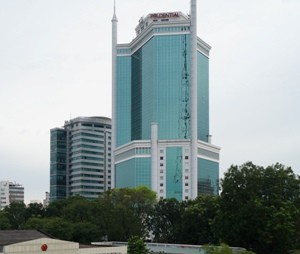
Singapore is the biggest ASEAN investor with 1,428 projects worth $32.2 billion for a 60.8% share of total registered investment.
Malaysia follows with 499 projects capitalized at $12.06 billion, and Thailand comes in third place with 392 projects at $6.8 billion.
ASEAN investment is primarily focused on the manufacturing and processing industry, the real estate sector, and the construction segment, said a report by VietnamNet Bridge.
The FIA said Ho Chi Minh (HCM) City tops the 55 provinces and cities that the regional group has invested in, with $15.07 billion injected into 1,114 projects. HCM is trailed by Hanoi with 417 projects funded at $8.58 billion, and Ba Ria-Vung Tau with 76 projects at $6.19 billion.
Meanwhile, outside of the ASEAN, another key investor is Taiwan. In the first half of this year, Taiwanese businesses injected US$297.41 million into 42 new projects and 21 operational ones.
By June, Taiwan runs 2,429 projects in Vietnam with a combined registered capital of $28.74 billion, ranking fourth among 103 foreign investors in Vietnam, after South Korea, Japan, and Singapore.
Beyond Asia, the U.S. is the seventh largest foreign investor with total registered capital topping $11.1 billion since 1988, according to MPI.
The U.S.’s largest scale project is Ho Tram in the southern province of Ba Ria-Vung Tau, with a total capital of $4.2 billion. Intel Company has also invested in a $1-billion chipset plant in Ho Chi Minh City.
Foreign direct investment capital from the U.S. to Vietnam reached $71 million last year and about $73 million in the first half this year.
Another major partner is the EU, where bilateral trade with Vietnam surpassed $36 billion, and Vietnam enjoyed a trade surplus of around $19 billion.
Experts say the Vietnam-EU free trade agreement and the Trans-Pacific Partnership will bring more opportunities to Vietnam as it can boost Vietnamese exports of competitive products to EU markets.
The EU accounted for 19% to 20% of Vietnam’s exports of key products in 2014, 36% of its phone exports, 35% of its leather shoe shipments, and 16.8% of its outbound apparel sales.
Once the FTA between Vietnam and the EU is signed, the EU will liberalize 95% to 97% of tariffs on Vietnamese goods. The FTA between Vietnam and the EU covers many fields such as trade, service, investment, and government procurement.
Photo: Pinus









